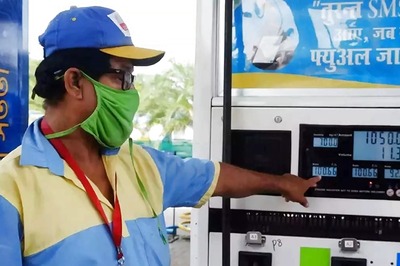
views
The normative value of reformers in India has always been huge. What, after all, were the great religious movements of Buddhism and Jainism but reform movements within a Hindu tradition rotting under caste abuse? The bhakti movements of the 14th century onwards which spread like wildfire as popular saints sought to break the stranglehold of the clergy and establish a direct relationship between god and devotee, was also a terrifically successful reform movement. The social reformers of the 19th century, when they campaigned against caste or sati or superstition or illiteracy found that there was a large public constituency for their reforms. The government, by restricting reforms, to financial measures and the corporate sector is depriving India of the passion and romance of reforms. By confining the spirit of reforms to the economic sector, the aam admi is being deprived of the energizing force of reforms. If India can be compliant with global standards in bank loans and in stock market management, then why can India not seek similar international standards in the police force, in hospitals, in the management of schools and in the justice system. The day when the interface between a policeman and the citizen becomes ceritified with a ISO 9000 certification is too far.
Here's the ready reckoner, the government has provided on reforms. Commerce and Industry minister Kamal Nath has proudly announced that during the current financial year FDI inflows was 4.4 billion dollars as compared to 2.2 billion received during the corresponding period of the previous year. Delhi and Mumbai airports are being privatized, improvements are being made in ports, there are faster contracts apparently in building of roads, our stock markets are one of the best regulated in the world, the banking system too is much better regulated and industrial confidence, so we are told, is at an all time high. The bitter truth is that the disinvestments process is stalled, insurance and pension reforms are still to begin. Yet towering over the reforms process is a certain deafening silence on the part of Manmohan Singh on the needs, the glories, and the ambitions of the 21st century Indian reformer. The big talk and the rhetoric has fallen silent. All we hear from minister after minister in this government is quotas, quotas and more quotas.
What should a 21st century reformer do for starters? First of all reform our cities. Our cities are becoming metaphors of the lopsided reform process, where Manhattan lifestyles are established in Five Star islands, with the rest of the landscape consigned to the dark ages. Our cities, are Indian cities, they cannot look like Shanghai or New York however hard we try. And our cities must be cities where all Indians live and flourish, not just Indians who own SUVs and can steam up and down flyovers. Delhi has 5 lakh cycle rickshaws and only 75,000 of them have licenses. Madhu Kishwar 's pioneering work among Delhi's rickshawpullers and vendors has produced some shocking statistics: Cycle rickshaws alone sustain 5-6 million people and street hawking or vendors sustain 2.5 to 3 million people. So, as a beginning, let the 21st century reformer chuck out the tourist brochure descriptions of the capital city. Delhi is not a city of babus and clerks. Delhi is not a city of fashion designers and hoteliers. Delhi is instead a city of cycle rickshaw pullers and vendors. Is it not a scandal that a city such as Delhi should have no cycle tracks? The cycle remains the chariot of the majority of the workforce, it is the vehicle that ferries millions to and from their workplaces. Yet in the screaming wide highways and the expressways, there is not a single cycle track for our inhabitants. The police and municipality have unleashed a brutal license permit raj on Delhi's street vendors, rera patris and cyclericksaws and made them into "scum" and a "law and order problem." Old codgers from the India International Centre have done everything in their power to clear the streets of "bad elements." By contrast the 21st century reformer must quickly throw out the word, "scum" from his dictionary and instead embrace the vendor and the cyclericksaw. Embrace them as the respectable artisans and village elders they are.
The 21st century reformer should balk at our colonial mentality. The mental enslavement that causes us to look constantly at the cities of the West and try and imitate their worst features.The 21st century reformer should shudder every time he sees a skinny child holding up Cosmopolitan at traffic lights and realize that its not economic reforms that's the reason for his plight but the fact that economic reforms are not going far enough, that reforms are not spreading into the social sector, that reforms have not entered our brains and animated our hearts, that reforms have not been able to break the paralysing elitism of our governments and taken the blinkers off our eyes. Reforms are not just a set of economic devices, they should be a magnificent new design, a new way of thinking, a new civil and democratic leap forward.
The 21st century reformer could glance at the police. Today India's police is an orphan child crying in a desert of neglect. When a three year old is kidnapped in NOIDA, it becomes clear that police still don't have systems to communicate between states. There is no technology available to arrest a drunk driver, there is no technology available to investigate a murder, there is no technology or manpower available to enforce the law in pockets of the leisure industry where alcohol, drugs and mindless euphoria are creating deadly new murderers. Nor is there a police force neutral enough available in Khairlanji village where rods were shoved into the genitals of Priyanka Bhotmange as her mother was forced to watch. The 21st century reformer might realize that there is need to give voice to a new spiritual and intellectual direction. If India's reforms do not deliver justice, basic health and quality education to the poor, the process of reforms itself will become meaningless for most.
The economy is growing at 8 per cent. The Indo-US nuclear deal is about to bring us a range of new high technology. But we have no new social technology. Our only definition of social justice is an antique instrument called quotas. How about an 8 per cent growth rate for social reform? How about instituting an ISO 9000 for a rural school that can successfully teach excellent English to rural Dalit children? Now that would be reform.About the AuthorSagarika Ghose Sagarika Ghose has been a journalist for 20 years, starting her career with The Times of India, then moving to become part of the start-up team...Read Morefirst published:November 24, 2006, 10:46 ISTlast updated:November 24, 2006, 10:46 IST
window._taboola = window._taboola || [];_taboola.push({mode: 'thumbnails-mid-article',container: 'taboola-mid-article-thumbnails',placement: 'Mid Article Thumbnails',target_type: 'mix'});
let eventFire = false;
window.addEventListener('scroll', () => {
if (window.taboolaInt && !eventFire) {
setTimeout(() => {
ga('send', 'event', 'Mid Article Thumbnails', 'PV');
ga('set', 'dimension22', "Taboola Yes");
}, 4000);
eventFire = true;
}
});
window._taboola = window._taboola || [];_taboola.push({mode: 'thumbnails-a', container: 'taboola-below-article-thumbnails', placement: 'Below Article Thumbnails', target_type: 'mix' });Latest News
Two and a half years after the inauguration of the government of the aam admi, there are different analyses of the record of the Manmohan Singh government. If the golden years of economic reform were 1991-93, when the first bold steps were taken to liberalise trade and dismantle controls then Manmohan Singh in 2006 seems a far more cautious reformer with second generation reforms struggling along in fits and starts. At the half way mark of the government by India's most famous blue turban, the question can be asked , why has the rhetoric of reforms, the mindset of reforms, indeed the momentum of reforms become so weak?
The normative value of reformers in India has always been huge. What, after all, were the great religious movements of Buddhism and Jainism but reform movements within a Hindu tradition rotting under caste abuse? The bhakti movements of the 14th century onwards which spread like wildfire as popular saints sought to break the stranglehold of the clergy and establish a direct relationship between god and devotee, was also a terrifically successful reform movement. The social reformers of the 19th century, when they campaigned against caste or sati or superstition or illiteracy found that there was a large public constituency for their reforms. The government, by restricting reforms, to financial measures and the corporate sector is depriving India of the passion and romance of reforms. By confining the spirit of reforms to the economic sector, the aam admi is being deprived of the energizing force of reforms. If India can be compliant with global standards in bank loans and in stock market management, then why can India not seek similar international standards in the police force, in hospitals, in the management of schools and in the justice system. The day when the interface between a policeman and the citizen becomes ceritified with a ISO 9000 certification is too far.
Here's the ready reckoner, the government has provided on reforms. Commerce and Industry minister Kamal Nath has proudly announced that during the current financial year FDI inflows was 4.4 billion dollars as compared to 2.2 billion received during the corresponding period of the previous year. Delhi and Mumbai airports are being privatized, improvements are being made in ports, there are faster contracts apparently in building of roads, our stock markets are one of the best regulated in the world, the banking system too is much better regulated and industrial confidence, so we are told, is at an all time high. The bitter truth is that the disinvestments process is stalled, insurance and pension reforms are still to begin. Yet towering over the reforms process is a certain deafening silence on the part of Manmohan Singh on the needs, the glories, and the ambitions of the 21st century Indian reformer. The big talk and the rhetoric has fallen silent. All we hear from minister after minister in this government is quotas, quotas and more quotas.
What should a 21st century reformer do for starters? First of all reform our cities. Our cities are becoming metaphors of the lopsided reform process, where Manhattan lifestyles are established in Five Star islands, with the rest of the landscape consigned to the dark ages. Our cities, are Indian cities, they cannot look like Shanghai or New York however hard we try. And our cities must be cities where all Indians live and flourish, not just Indians who own SUVs and can steam up and down flyovers. Delhi has 5 lakh cycle rickshaws and only 75,000 of them have licenses. Madhu Kishwar 's pioneering work among Delhi's rickshawpullers and vendors has produced some shocking statistics: Cycle rickshaws alone sustain 5-6 million people and street hawking or vendors sustain 2.5 to 3 million people. So, as a beginning, let the 21st century reformer chuck out the tourist brochure descriptions of the capital city. Delhi is not a city of babus and clerks. Delhi is not a city of fashion designers and hoteliers. Delhi is instead a city of cycle rickshaw pullers and vendors. Is it not a scandal that a city such as Delhi should have no cycle tracks? The cycle remains the chariot of the majority of the workforce, it is the vehicle that ferries millions to and from their workplaces. Yet in the screaming wide highways and the expressways, there is not a single cycle track for our inhabitants. The police and municipality have unleashed a brutal license permit raj on Delhi's street vendors, rera patris and cyclericksaws and made them into "scum" and a "law and order problem." Old codgers from the India International Centre have done everything in their power to clear the streets of "bad elements." By contrast the 21st century reformer must quickly throw out the word, "scum" from his dictionary and instead embrace the vendor and the cyclericksaw. Embrace them as the respectable artisans and village elders they are.
The 21st century reformer should balk at our colonial mentality. The mental enslavement that causes us to look constantly at the cities of the West and try and imitate their worst features.The 21st century reformer should shudder every time he sees a skinny child holding up Cosmopolitan at traffic lights and realize that its not economic reforms that's the reason for his plight but the fact that economic reforms are not going far enough, that reforms are not spreading into the social sector, that reforms have not entered our brains and animated our hearts, that reforms have not been able to break the paralysing elitism of our governments and taken the blinkers off our eyes. Reforms are not just a set of economic devices, they should be a magnificent new design, a new way of thinking, a new civil and democratic leap forward.
The 21st century reformer could glance at the police. Today India's police is an orphan child crying in a desert of neglect. When a three year old is kidnapped in NOIDA, it becomes clear that police still don't have systems to communicate between states. There is no technology available to arrest a drunk driver, there is no technology available to investigate a murder, there is no technology or manpower available to enforce the law in pockets of the leisure industry where alcohol, drugs and mindless euphoria are creating deadly new murderers. Nor is there a police force neutral enough available in Khairlanji village where rods were shoved into the genitals of Priyanka Bhotmange as her mother was forced to watch. The 21st century reformer might realize that there is need to give voice to a new spiritual and intellectual direction. If India's reforms do not deliver justice, basic health and quality education to the poor, the process of reforms itself will become meaningless for most.
The economy is growing at 8 per cent. The Indo-US nuclear deal is about to bring us a range of new high technology. But we have no new social technology. Our only definition of social justice is an antique instrument called quotas. How about an 8 per cent growth rate for social reform? How about instituting an ISO 9000 for a rural school that can successfully teach excellent English to rural Dalit children? Now that would be reform.



















Comments
0 comment